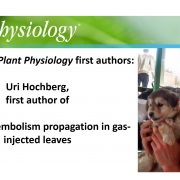
Recognizing Plant Physiology first authors: Uri Hochberg
Plant Physiology, Plant Physiology: Author ProfilesUri Hochberg, first author of Visualizing embolism propagation in gas-injected leaves
Current Position: Researcher in Department of Soil Water and Environmental sciences, Agriculture Research Organization, Volcani Center, Israel
Education: Ph.D in Ben Gurion University of the Negev
Non-scientific…
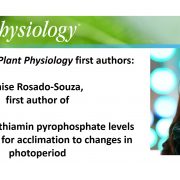
Recognizing Plant Physiology first authors: Laise Rosado-Souza
Plant Physiology, Plant Physiology: Author ProfilesLaise Rosado-Souza, first author of Appropriate thiamin pyrophosphate levels are required for acclimation to changes in photoperiod
Current Position: Postdoctoral Researcher at the Max Planck Institute for Molecular Plant Physiology, Germany
Education: PhD in Molecular Plant Physiology at Max Planck…
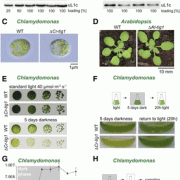
The Role of Trigger Factor in Chloroplasts
Plant Physiology, Plant Physiology: On The InsideChloroplasts contain a small genome that encodes only a minor fraction of approximately 60 to 100 proteins of the entire 3,000 proteins localized in the chloroplast. Chloroplast-encoded proteins, however, are major subunits of important protein complexes involved in gene expression and photosynthesis.…

A Calcium Sensor Involved in Salt Tolerance
Plant Physiology, Plant Physiology: On The InsideIt is estimated that 20% of irrigated land is negatively impacted by salt and 1% to 2% of irrigated land is lost each year due to the accumulation of salt. Salt, particularly sodium chloride (NaCl), negatively affects plant growth in several ways. The accumulation of salt in the soil restricts water…
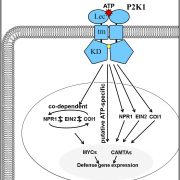
Extracellular ATP-Induced Transcriptome
Plant Physiology, Plant Physiology: On The InsideTransmembrane receptors monitor changes in extracellular ATP concentration in order to detect either the uncontrolled ATP release caused by the necrosis of nearby cells or to instigate active ATP release following pathogen detection. Extracellular ATP can be perceived, therefore, as a sign of damaged…
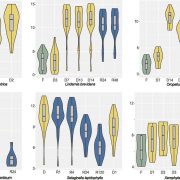
Desiccation Tolerance Arose via Gene Duplication
Plant Physiology, Plant Physiology: On The InsideDesiccation tolerance was a critical adaptation for the colonization of land by early nonvascular plants. Perhaps the most spectacular adaptations relating to vegetative dehydration tolerance are exhibited by “resurrection plants” that have the ability to recover from conditions of almost complete…

Light Acclimation in a Colonial Green Alga
Plant Physiology, Plant Physiology: On The InsideThe responses of leaves and unicellular algae to supra-optimal levels of light are well-studied but little is known about the responses of colonial algae to such stresses. To investigate differences between single cellular and colonial species, Van den Berg et al. (10.1104/pp.18.01499) have studied the…
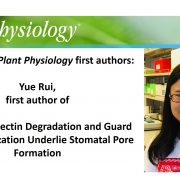
Recognizing Plant Physiology first authors: Yue Rui
Plant Physiology, Plant Physiology: Author ProfilesYue Rui, first author of Synergistic Pectin Degradation and Guard Cell Pressurization Underlie Stomatal Pore Formation
Current Position: Postdoctoral Scholar, Department of Biology, Stanford University
Education: PhD in Plant Biology, The Pennsylvania State University; B.S. in Biological Sciences,…
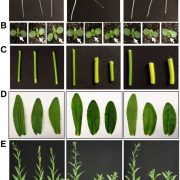
G-Protein Signaling Regulates a Patatin-Like Phospholipase
Plant Physiology, Plant Physiology: On The InsideCamelina (Camelina sativa) is a genetically tractable oil seed crop, which has emerged as an important resource for production of both food and nonfood oil, due to several unique characteristics. The seeds contain 30% to 35% oil, which is rich in omega-3 fatty acids. It is also a low-input, relatively…

